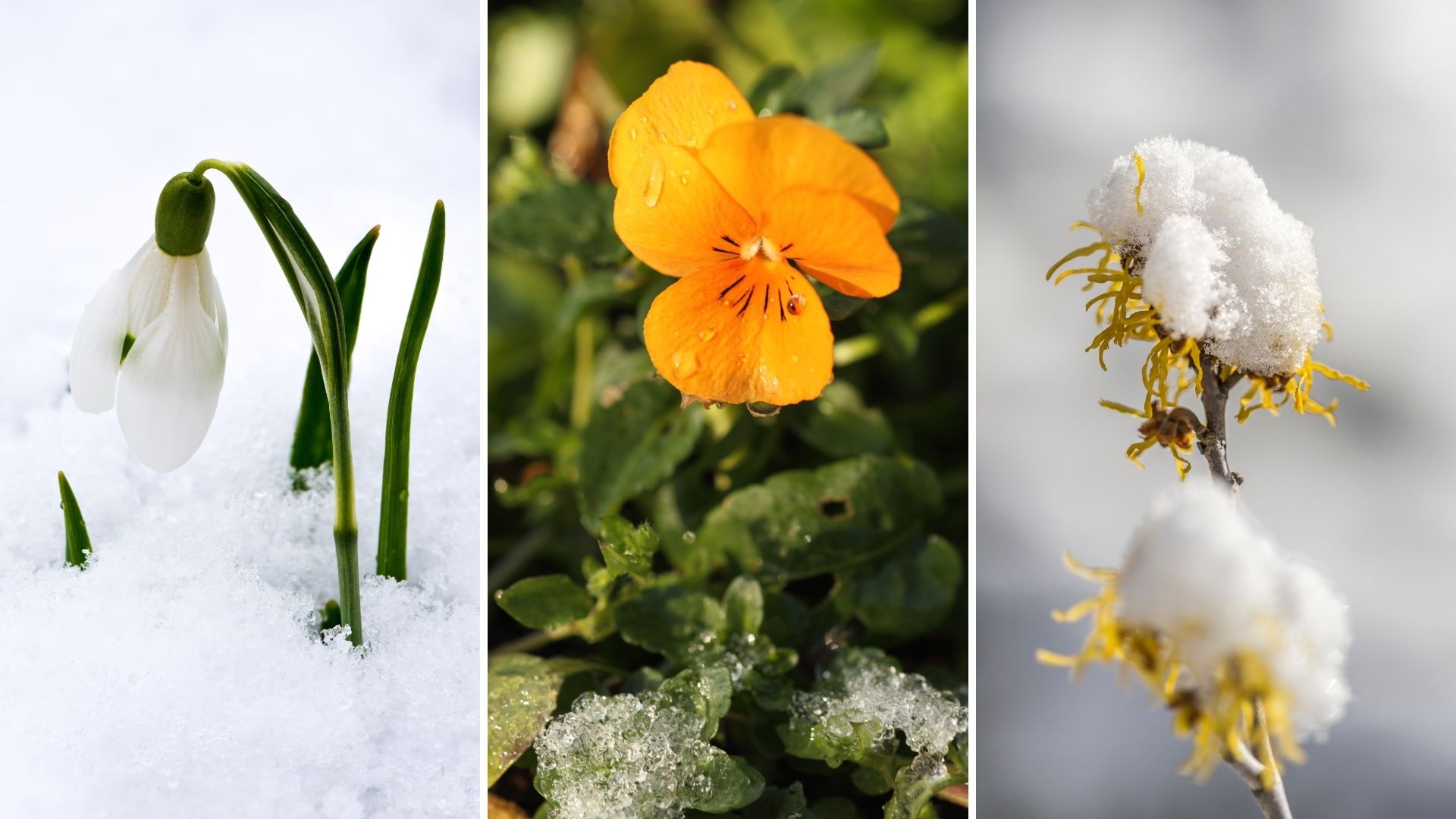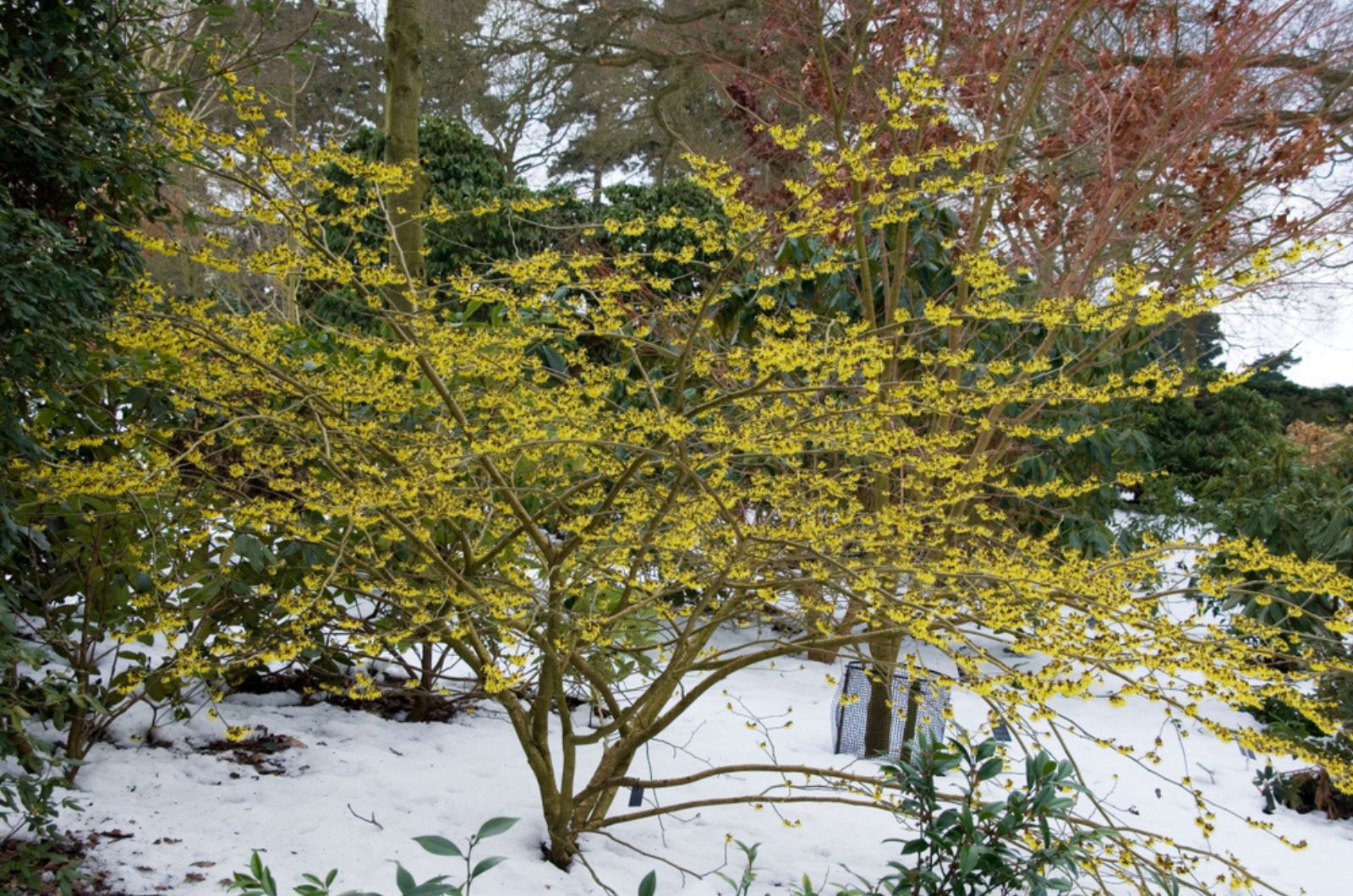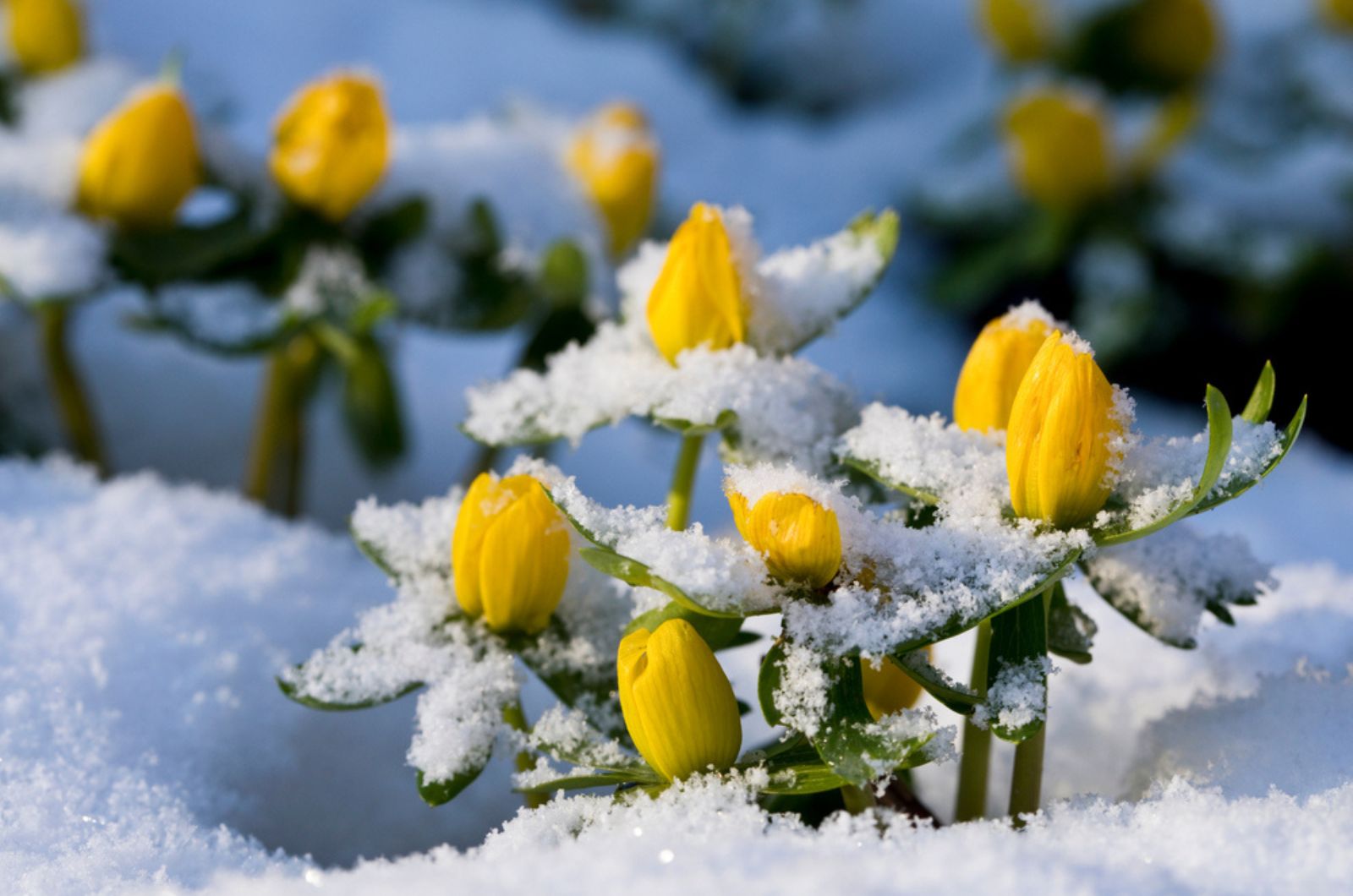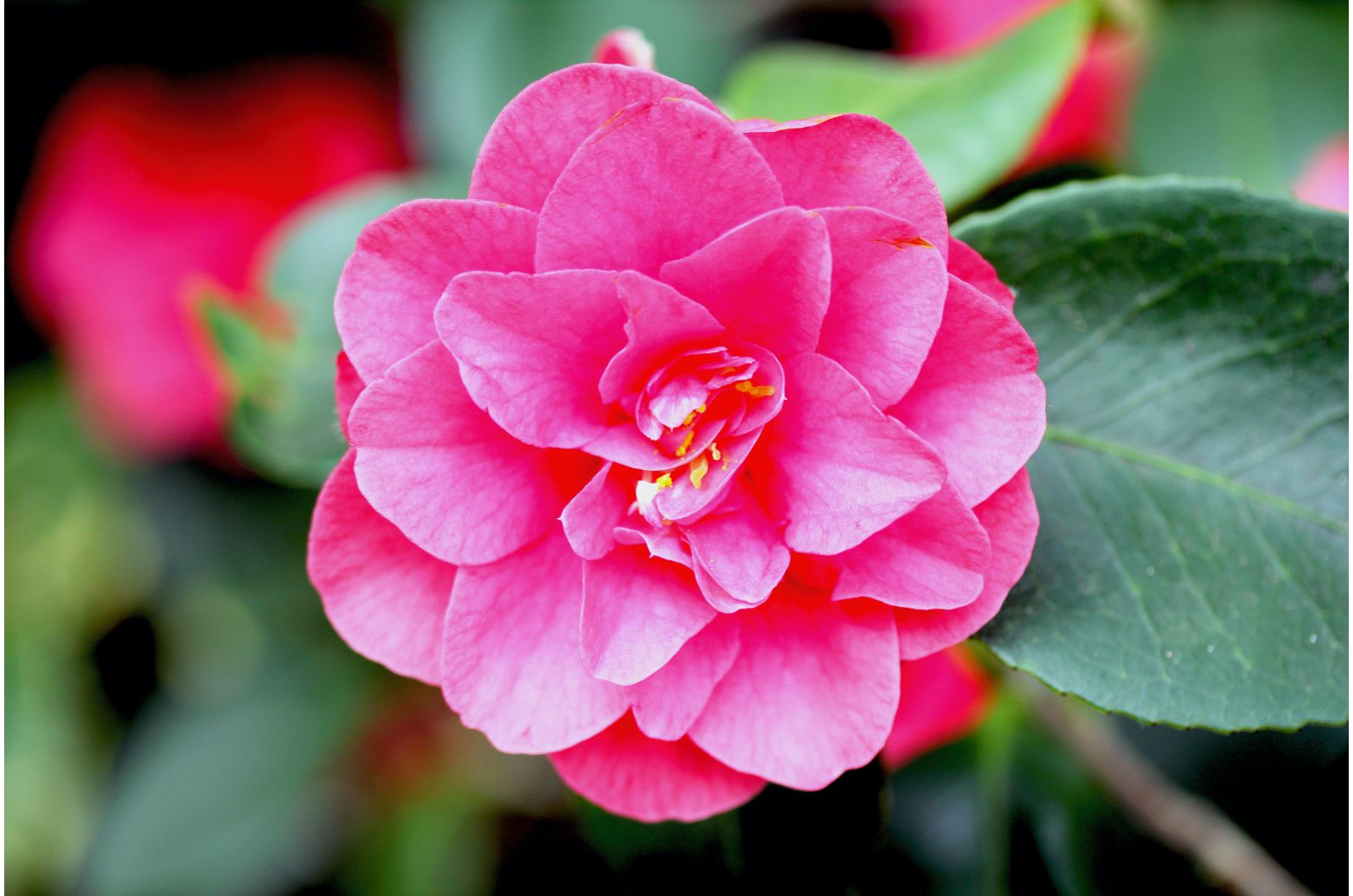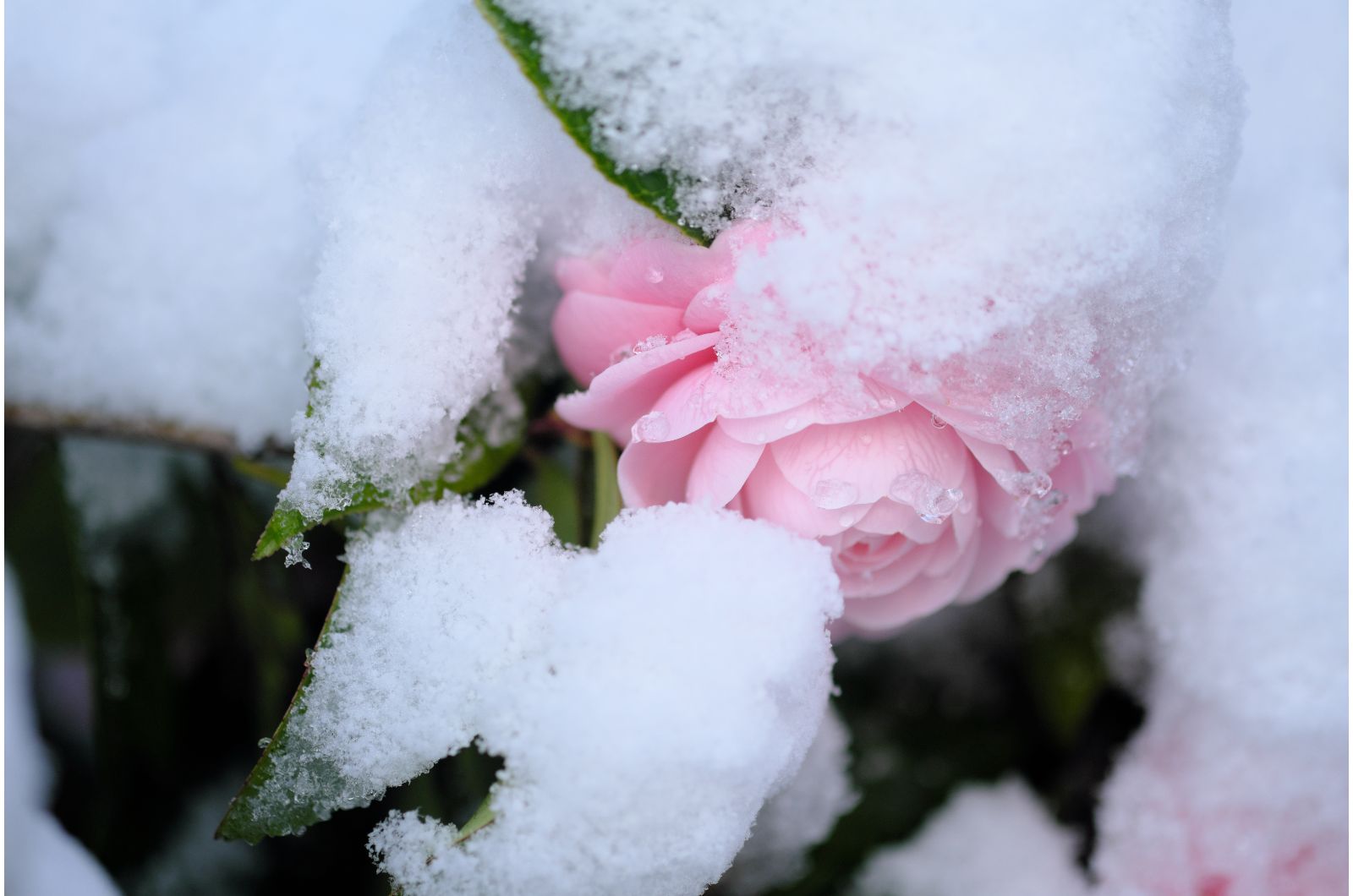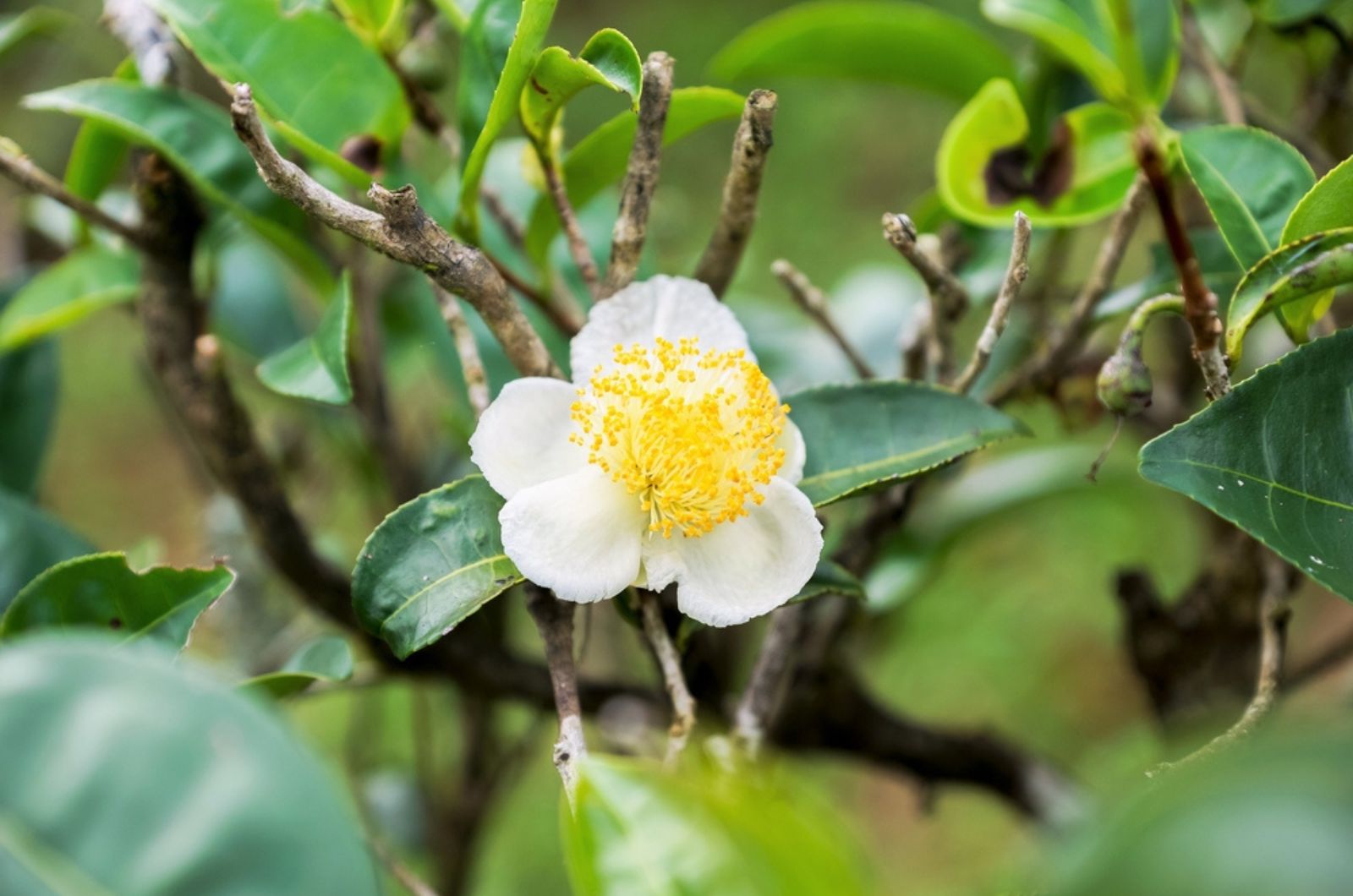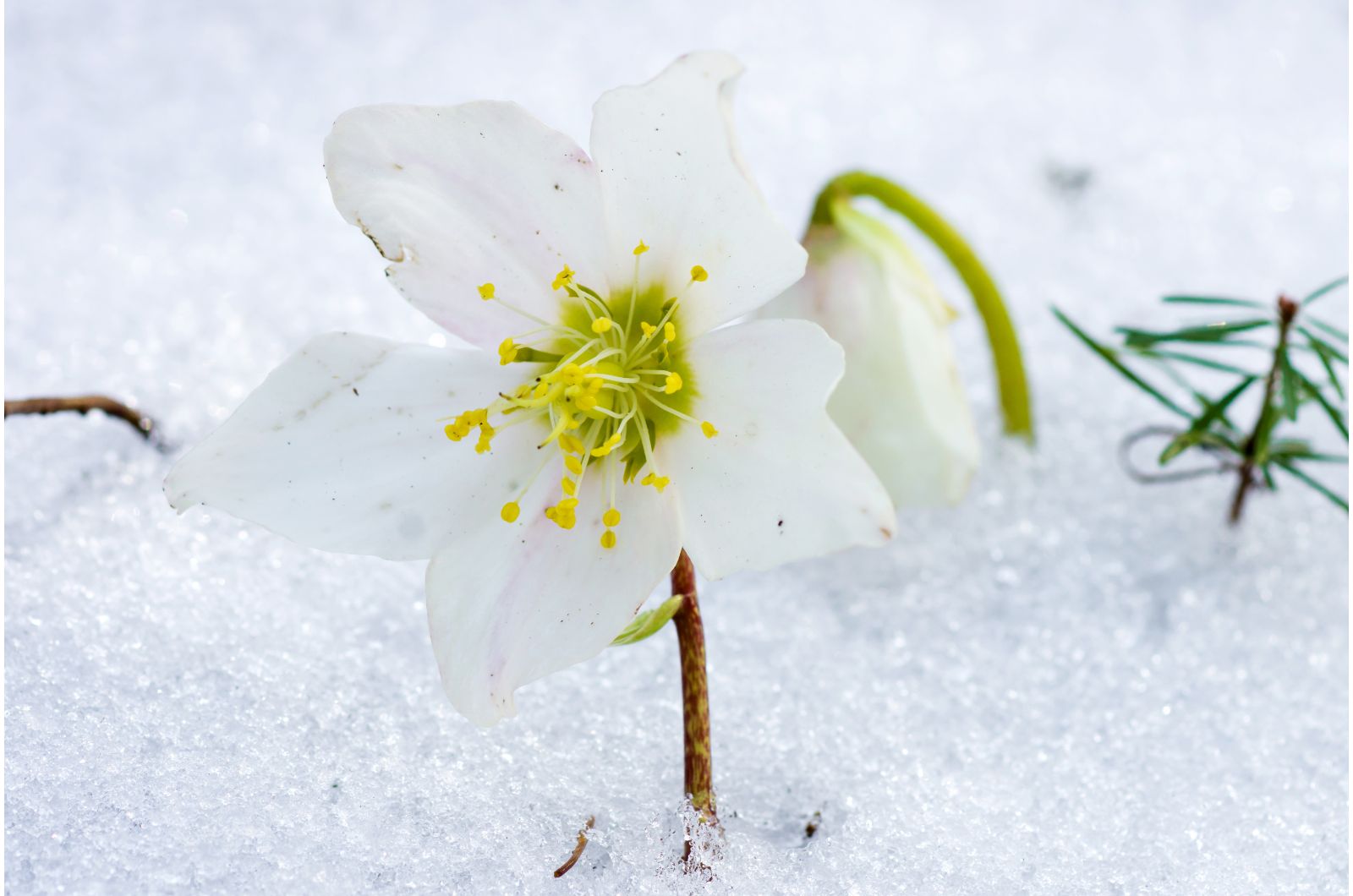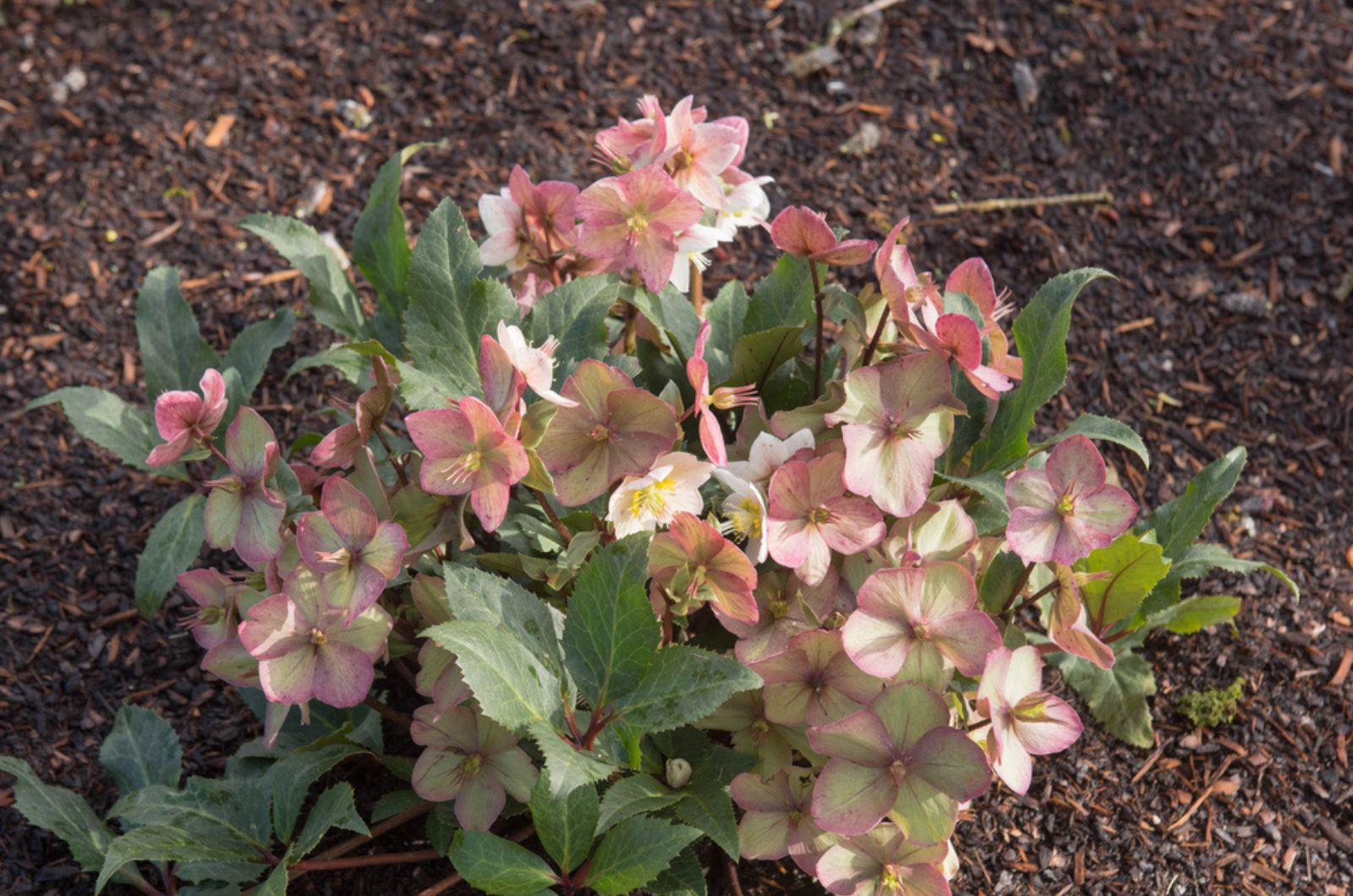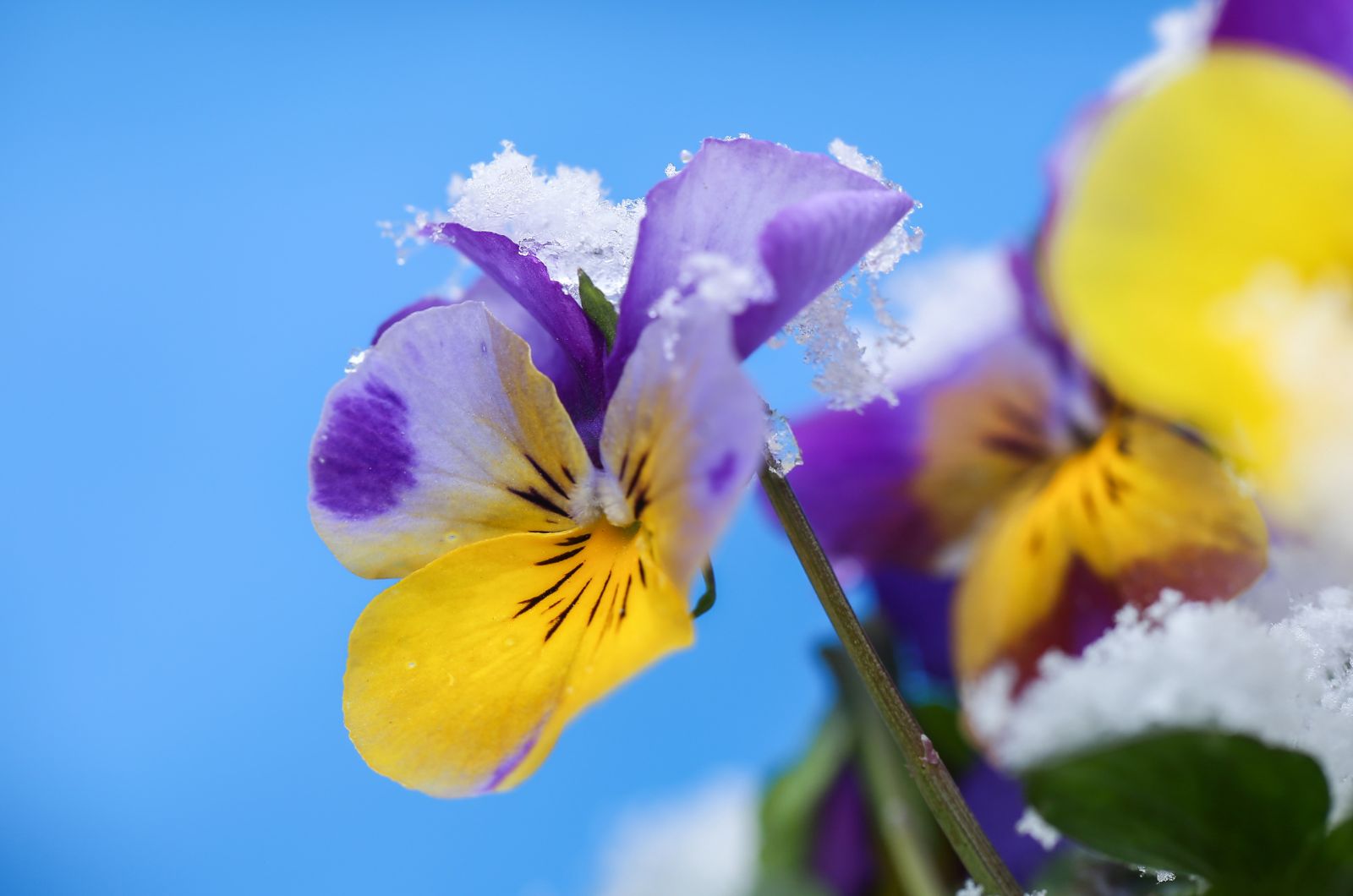Even though winters are usually white, bleak, and dreary, it doesn’t have to be that way. You can introduce some color to your January garden with a few early-bloomers.
Yes, there are plants that will flower in the midst of winter. And I’m not talking only about snowdrops and crocuses!
There are many other bulbs, trees, annuals, and perennials that will bloom in winter. Here are some options that will bring life to your winter garden.
Let’s get started!
#1 Early-Blooming Trees
Most trees don’t flower early in the season, but there are a couple of them that can grace your winter garden.
Witch hazel and wintersweet can bloom in January, especially as you go further south.
They don’t have the most dramatic flowers, but they will be a true centerpiece of your winter garden. Remember, most other trees don’t bloom this early in the season!
P.S. Witch hazel is on the list of plants that will bloom in the coldest months. Make sure to care for it well, and it will adorn your garden with cute yellow flowers.
#2 Early-Flowering Spring Bulbs
There are many fall-planted bulbs that can bloom in January. Of course, this depends on the weather conditions and your zone.
If you live far up North, chances are, you won’t see any flowers this early. Yet, if you live in USDA hardiness zone 6 or 7 and below, you’re more than likely to enjoy the early onset of flower color.
Crocuses and snowdrops are some of the earliest-blooming bulbous plants out there. You can spot them in January and early February.
In fact, snowdrops are some of the best spring bulbs to start in fall. They are more widespread in Europe, but take a stroll near a creek or woodland girdle, and you’re bound to see them.
Finally, there’s winter aconite. This yellow beauty is less common than crocuses and snowdrops, but you can find it in nurseries.
They are a bit more demanding than crocuses and snowdrops (you virtually only have to plant these, and they will grow just fine).
Winter aconites do best in well-drained soils. Don’t water them too often, and they should be good to go.
P.S. All these bulbs thrive in full sun conditions. Provide them with that, and you’ll have no issues growing them.
#3 Candytuft
Candytuft is one of the rock garden plants that will blossom in January if everything goes well. But, you might hit a wall if you only look for them in garden centers. You may find them at Lowe’s, though. The internet is a much better place to search.
The bad news is that they are difficult to start. It does take a little trial and error, so you might end up with nothing on your first try.
Yet, they look amazing in rock gardens and as a ground cover. Once they establish, they only need irrigation during dry spells. Keep them safe from slugs and snails, and mulch them in winter.
#4 Camellia
If you’re looking for woodland shade garden ideas, camellias are here to help. Some even find them better than roses. They look similar, but thrive in less favorable conditions.
They can also provide a burst of color in the early months – January even.
In general, garden centers only have a few varieties on hand. Look for online retailers, such as Camellia Forest Nursery, Wilson Bros Gardens, or Camellia Shop.
There are countless camellia varieties out there. Light or vivid colored; variegated, single, semi-double, formal double, or fully double blossoms; shrubs or small trees.
There are two main categories: C. japonica and C. sasanqua. The former is taller (8-10 ft tall or taller) and makes for an excellent hedge. You can also shape it into a small tree. C. sasanqua usually gets 4-6 ft tall and represents a perfect shrub.
Or you can try growing C. sinensis. You can brew the leaves of this camellia into a delicious tea. And it looks stunning in landscapes!
Use your camellias to add more color to the shaded parts of your garden. They’re perfect for zones 8-10, although there are cultivars that can tolerate temperatures in zones 6 and 7.
Prune your camelias to your liking. Hedges, shrubs, small trees, espaliers – they look amazing in every shape!
#5 Hellebore
Hellebores are gorgeous plants that will flower in mild winters. Don’t let another year pass without planting them.
There are so many cultivars out there. And you can find them without any trouble. They’re everywhere! Lowe’s, local nurseries and garden centers, the internet – you name it!
You can get Helleborus niger (aka Christmas rose) which blooms around Christmas. Or you can try Helleborus orientalis (aka Lenten rose) which blooms around Easter.
The good news is that there are many hybrids on the market, some of which can bloom as early as January. Helleborus x ericsmithii is one of them, flowering from January to March.
The ‘Shooting Star’ cultivar of this hellebore is amazing. It bears countless blush white blossoms. However, it doesn’t tolerate transplanting that well. So, plant it in its permanent location from the start and that’s it.
Hybrid hellebores offer a lot more color. Pink, magenta, purple, and yellow combos are quite stunning. Choose single or double-flowered varieties. I like the simplicity of single petals, but to each their own.
Finally, the thing I like most about hellebores is that many of them are evergreen. Even when they’re not in bloom, they still find a way to bring interest to your garden!
#6 Pansies
If you want frost-hardy plants that will fit into your garden, look no further than pansies. These annuals will bring an explosion of color and end the dreary winter.
Combine them with violas for more interest, and enjoy. Both plants thrive in direct morning sunlight.
They will provide a pop of color, especially when planted in bunches.
And they’re certainly not boring! Pansies come in various colors. Look for multicolored violet, orange, or yellow shades. Interplant them with early spring bulbs, and enjoy!

